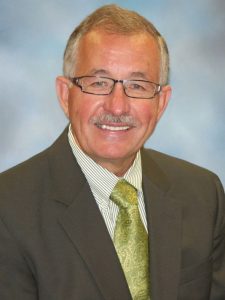By GRACE SMITH
The arrest and conviction of Larry Nassar, the former Michigan State University and USA Gymnastics doctor who abused more than 200 women over his career, is one of the largest sex abuse scandals in U.S. history.
Now, his boss is under fire.
William Strampel was dean of the College of Osteopathic Medicine and oversaw the clinic where Nassar worked.
He failed to enforce proper examination room regulations he set in place following an accusation against Nassar in 2014, which required doctors to have a chaperone present whenever they examined “sensitive” body areas.
This allowed Nassar to continue to abuse his patients. Even in the midst of the sexual abuse investigation in 2014 Stampel allowed him to return to work and did not inform the rest of the Osteopathic Medicine Department of his new regulations. He stated in 2017 he did not feel the need to check to see if Nassar was following these new rules because he felt he had been “exonerated” by a investigation by the university and the police.
Strampel’s work computer contained more than 50 photos of female genitalia, nude women, sex toys and pornography, as well as an extensive collection of female “selfies” of MSU students, most likely pulled from social media.
Most worryingly, there was also saved video of Nassar “performing a ‘treatment’ on a young female patient. Forsyth, who was hired by Michigan’s attorney general to investigate the university, would not discuss the photos on the computer or how Stampel may have come in possession of them.
Outside of Nassar connections, Stampel has also been repeatedly accused of sexual assault by young women around MSU.
I am always skeptical when it comes to new coverage of sexual assault and its victims. If the news media aren’t implying blame on the victims, they are often sensationalizing the stories and jumping the gun on accusations.
However, I was pleasantly surprised by this story’s coverage as well, by extension, the coverage of the Nassar case. The news media were mindful when discussing Nassar’s victims and even seems to hold the 200 testimonies against him in high regard. These articles were no different.
There was very little wild speculation over who was a victim and rather drew the lines that prosecutors and investigators had within their statements. They mirror Nassar’s actions against Stampel’s work as dean to create a timeline and connect events. Even articles with pointed tones still lay out the facts and list the defense’s claims, even if it would be easy to immediately condemn him in the wake of Nassar.

